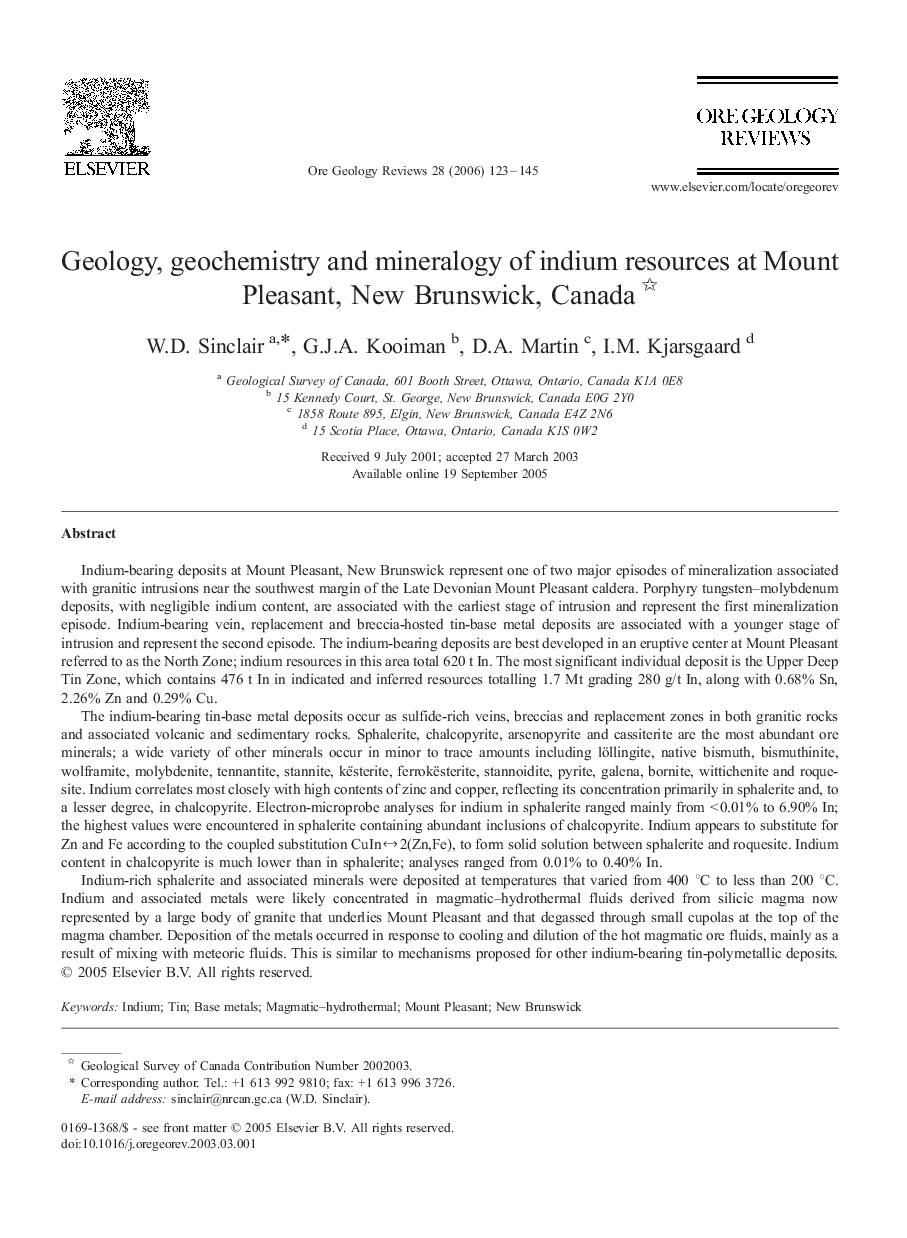| Article ID | Journal | Published Year | Pages | File Type |
|---|---|---|---|---|
| 4698127 | Ore Geology Reviews | 2006 | 23 Pages |
Indium-bearing deposits at Mount Pleasant, New Brunswick represent one of two major episodes of mineralization associated with granitic intrusions near the southwest margin of the Late Devonian Mount Pleasant caldera. Porphyry tungsten–molybdenum deposits, with negligible indium content, are associated with the earliest stage of intrusion and represent the first mineralization episode. Indium-bearing vein, replacement and breccia-hosted tin-base metal deposits are associated with a younger stage of intrusion and represent the second episode. The indium-bearing deposits are best developed in an eruptive center at Mount Pleasant referred to as the North Zone; indium resources in this area total 620 t In. The most significant individual deposit is the Upper Deep Tin Zone, which contains 476 t In in indicated and inferred resources totalling 1.7 Mt grading 280 g/t In, along with 0.68% Sn, 2.26% Zn and 0.29% Cu.The indium-bearing tin-base metal deposits occur as sulfide-rich veins, breccias and replacement zones in both granitic rocks and associated volcanic and sedimentary rocks. Sphalerite, chalcopyrite, arsenopyrite and cassiterite are the most abundant ore minerals; a wide variety of other minerals occur in minor to trace amounts including löllingite, native bismuth, bismuthinite, wolframite, molybdenite, tennantite, stannite, kësterite, ferrokësterite, stannoidite, pyrite, galena, bornite, wittichenite and roquesite. Indium correlates most closely with high contents of zinc and copper, reflecting its concentration primarily in sphalerite and, to a lesser degree, in chalcopyrite. Electron-microprobe analyses for indium in sphalerite ranged mainly from < 0.01% to 6.90% In; the highest values were encountered in sphalerite containing abundant inclusions of chalcopyrite. Indium appears to substitute for Zn and Fe according to the coupled substitution CuIn ↔ 2(Zn,Fe), to form solid solution between sphalerite and roquesite. Indium content in chalcopyrite is much lower than in sphalerite; analyses ranged from 0.01% to 0.40% In.Indium-rich sphalerite and associated minerals were deposited at temperatures that varied from 400 °C to less than 200 °C. Indium and associated metals were likely concentrated in magmatic–hydrothermal fluids derived from silicic magma now represented by a large body of granite that underlies Mount Pleasant and that degassed through small cupolas at the top of the magma chamber. Deposition of the metals occurred in response to cooling and dilution of the hot magmatic ore fluids, mainly as a result of mixing with meteoric fluids. This is similar to mechanisms proposed for other indium-bearing tin-polymetallic deposits.
